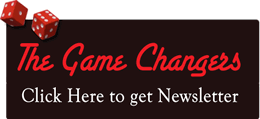By Paul Newnes, Marketer, Technologist, Strategist at CreDec
Overview
Leadership and innovation are very popular topics with a near endless supply of x steps to being a better leader or the y traits of innovative organizations. As a caveat emptor this article isn’t one of those. These are results from academic research that reveal something, hopefully interesting and useful, as to how leaders create and manage innovation.
As background, I ran a digital agency for around 12 years in New York – before the term ‘digital agency was even coined. Besides making me old, it made me extremely curious as how agency leaders can foster innovation in their organizations. I’ve recently relocated back to the UK and in-between consultancy engagements I’ve had some time to conduct primary research in the area of leadership and innovation in marketing agencies.
I’m using innovation in a very broad sense; in the context of agencies then it encompasses 3 general areas:
- Creative output for business-as-usual client work
- Developing new service areas (eg. a new service, capability or platform)
- Innovation as a service (if offered)
Research
The research, in the form of semi-structured interviews, was gathered from 12 chief officers of successful digital, branding, creative (advertising), strategic, vertical specialist marketing agencies and as an outlier, a specialist innovation agency. The goal was to look for common themes as to how senior leaders create conditions for innovation to occur within those organizations.
The questions covered a variety of areas including:
- Innovation processes or practices
- Responsibility for innovation within their respective organizations
- Leadership traits to be coached into or selected in the hiring of middle managers
- Organizational cultural programs
- Characteristics and traits in hiring of middle managers
Results
Given the broad cross-section of agency types within a relatively small sample, it was somewhat surprising (but from a research point of view gratifying) to find that similar themes emerged:
- The overlap in services by agencies offered is large; meaning each agency’s declared specialism is more of an historic approach to a client engagement rather than a limitation to the services they offer. Incremental service innovation is near constant
- This non-specialism has placed demands on senior leadership to create organizational structures that can support an ever increasing portfolio of capabilities and services
- The larger agencies have moved to some kind of matrixed organizational structure with a clear tension between specialization departments, or practices, and local P&L responsibility
-
The necessity for organizational change is near constant and for some of the interviewees organizational change is a deliberate ploy rather than a reaction
- “…we announce changes every four to six weeks around here; we literally make people change where they are sitting every couple of weeks also, just to keep them moving around and keep them thinking about different (things).”
-
The senior client account leaders are effectively the filter for innovation within agencies in terms of the definition and approval of client work and the selection of project team members
- “…you see some kind of account handler/project manager guiding the entire initiative, the quarterback of the client engagement.”
- New hires must be a “cultural fit” with the senior account leaders being able to demonstrate a high degree of “emotional intelligence”
Of all the themes the one most consistently stressed was the importance of organizational culture and cultural fit. The difference observed between this sample and the general business press was the definitions and commitment given to culture by the former.
This isn’t surprising. Theresa Amabile has written extensive academic studies about particular organizational cultural conditions being absolutely necessary for creativity, as a precursor to innovation, to occur.
One of the conditions for creativity, low stress of time pressure, is simply not something that is a feature of any of the interviewees’ organizations, nor I would say any marketing agency with ambitions to grow.
The account leaders and managers have to manage up, manage down and manage the client. Team members are working to tight deadlines and often in project teams where they may or may not know the other team members. Last minute client changes come in, work is rejected, and deadlines move. These are far from the ideal organisational conditions for innovation to occur, yet marketing agencies are consistently ranked as high achievers for innovation in knowledge bases businesses.
So how to resolve the paradox?
If workload and time pressures are high, it follows that agencies over-index in the other characteristics that facilitate creativity and other studies endorse this logic.
From this research it can be seen that there is a particular way that chief officers manage culture. The high pressure and highly changeable working structures within these agencies are emolliated by a set of defined and adhered to cultural values, or “working principles” amongst their employees. This gives predictability to teamwork in a changeable environment. Organizational culture has long been defined as ‘the way we do things around here’, but from this research the difference is the commitment and the involvement these chief officers have to creating a culture that supersedes siloed subcultures and even, for those agencies that operate internationally, national cultures. For these organizations the culture is in effect supra-national.
In essence the principles/values remove the barriers for work to be actually being accomplished and provide acceptance of creative work.
Conclusion
Further investigation is definitely needed, but if I was to reduce the entire research to two conclusions, they would be:
- Agency CEOs can’t leave the business of their organization’s culture to anyone else – it’s just too important to the future health of their company. ‘Grade inflation’ might have changed the job titles of senior HR professionals, but the Chief Culture Officer is the CEO.
- Because agencies are highly time-pressured work environments, organizational impediments whether structural or individual kill creativity, and hence innovation, at a faster rate than other companies. Cultural values / principles can remove barriers since employees at any level can call out behaviors or effects incongruent to the codified principles.
Actions
From the concluding points above the CEO needs to know two things:
- Are there impediments to creativity in my organization?
- What is the present definition of the overall organizational culture?
There are fairly well established means of fulfilling the above through KEYS and OCAI studies; the former giving a good snapshot of conditions or obstacles for creativity (in the context for a marketing agency), and the latter providing a definition of culture at present.
The tricky decision then is to define the culture suitable for your organization and move towards that state.
For 12 years until 2015, Paul Newnes was a partner in two digital agencies, Brick+Bond and Last Exit. In that time he led the transition from nascent ‘web agencies’ to providers of strategic and executional marketing services for major US & UK companies and brands.
Paul currently heads marketing for a UK FinTech company, CreDec, and is on the board of a renewable energy social enterprise, Nomogen Solutions. Paul can be reached at paulnewnes@gmail.com.


